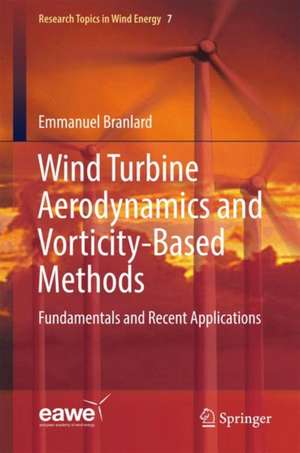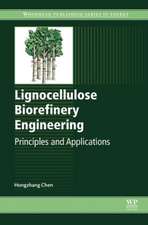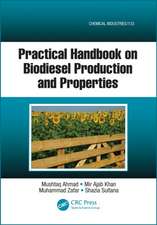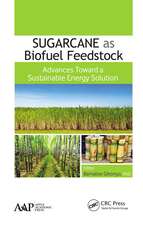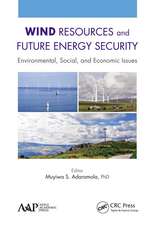Wind Turbine Aerodynamics and Vorticity-Based Methods: Fundamentals and Recent Applications: Research Topics in Wind Energy, cartea 7
Autor Emmanuel Branlarden Limba Engleză Hardback – 13 apr 2017
| Toate formatele și edițiile | Preț | Express |
|---|---|---|
| Paperback (1) | 1561.06 lei 6-8 săpt. | |
| Springer International Publishing – 25 iul 2018 | 1561.06 lei 6-8 săpt. | |
| Hardback (1) | 1567.36 lei 6-8 săpt. | |
| Springer International Publishing – 13 apr 2017 | 1567.36 lei 6-8 săpt. |
Preț: 1567.36 lei
Preț vechi: 1911.41 lei
-18% Nou
299.91€ • 313.97$ • 248.16£
Carte tipărită la comandă
Livrare economică 05-19 aprilie
Specificații
ISBN-10: 3319551639
Pagini: 632
Ilustrații: XXXI, 632 p. 179 illus., 84 illus. in color.
Dimensiuni: 155 x 235 x 37 mm
Greutate: 1.1 kg
Ediția:1st ed. 2017
Editura: Springer International Publishing
Colecția Springer
Seria Research Topics in Wind Energy
Locul publicării:Cham, Switzerland
Cuprins
Part I Fluid Mechanics Foundations.- Part II Introduction to Rotors Aerodynamics.- Part III Classical Vortex Theory Results: Optimal Circulation and Tip-Losses.- Part IV Latest Developments in Vorticity-based Rotor Aerodynamics.- Part V Latest Applications of Vortex Methods to Rotor Aerodynamics and
Textul de pe ultima copertă
The book introduces the fundamentals of fluid-mechanics, momentum theories, vortex theories and vortex methods necessary for the study of rotors aerodynamics and wind-turbines aerodynamics in particular. Rotor theories are presented in a great level of details at the beginning of the book. These theories include: the blade element theory, the Kutta-Joukowski theory, the momentum theory and the blade element momentum method. A part of the book is dedicated to the description and implementation of vortex methods. The remaining of the book focuses on the study of wind turbine aerodynamics using vortex-theory analyses or vortex-methods. Examples of vortex-theory applications are: optimal rotor design, tip-loss corrections, yaw-models and dynamic inflow models. Historical derivations and recent extensions of the models are presented. The cylindrical vortex model is another example of a simple analytical vortex model presented in this book. This model leads to the development of different BEM models and it is also used to provide the analytical velocity field upstream of a turbine or a wind farm under aligned or yawed conditions. Different applications of numerical vortex methods are presented. Numerical methods are used for instance to investigate the influence of a wind turbine on the incoming turbulence. Sheared inflows and aero-elastic simulations are investigated using vortex methods for the first time. Many analytical flows are derived in details: vortex rings, vortex cylinders, Hill's vortex, vortex blobs etc. They are used throughout the book to devise simple rotor models or to validate the implementation of numerical methods. Several Matlab programs are provided to ease some of the most complex implementations.
Caracteristici
Descriere
The book introduces the fundamentals of fluid-mechanics, momentum theories, vortex theories and vortex methods necessary for the study of rotors aerodynamics and wind-turbines aerodynamics in particular. Rotor theories are presented in a great level of details at the beginning of the book. These theories include: the blade element theory, the Kutta-Joukowski theory, the momentum theory and the blade element momentum method. A part of the book is dedicated to the description and implementation of vortex methods. The remaining of the book focuses on the study of wind turbine aerodynamics using vortex-theory analyses or vortex-methods. Examples of vortex-theory applications are: optimal rotor design, tip-loss corrections, yaw-models and dynamic inflow models. Historical derivations and recent extensions of the models are presented. The cylindrical vortex model is another example of a simple analytical vortex model presented in this book. This model leads to the development of different BEM models and it is also used to provide the analytical velocity field upstream of a turbine or a wind farm under aligned or yawed conditions. Different applications of numerical vortex methods are presented. Numerical methods are used for instance to investigate the influence of a wind turbine on the incoming turbulence. Sheared inflows and aero-elastic simulations are investigated using vortex methods for the first time. Many analytical flows are derived in details: vortex rings, vortex cylinders, Hill's vortex, vortex blobs etc. They are used throughout the book to devise simple rotor models or to validate the implementation of numerical methods. Several Matlab programs are provided to ease some of the most complex implementations.
